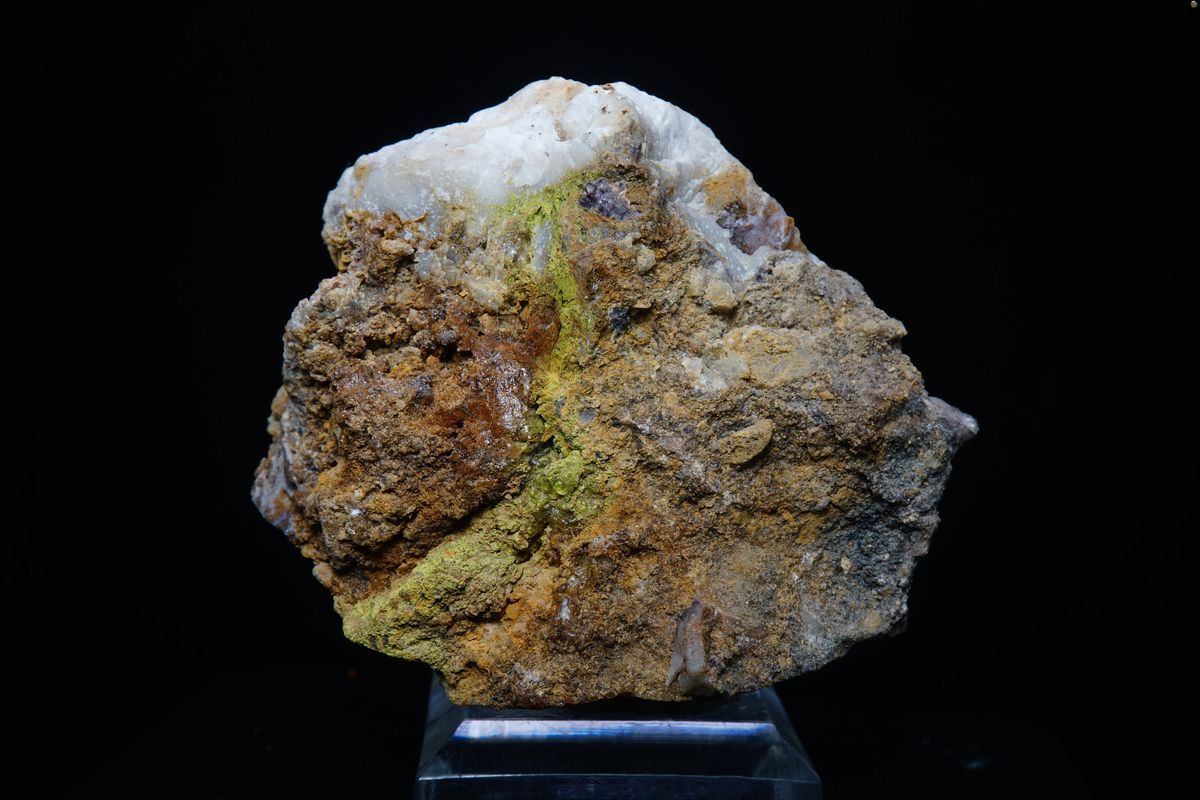
What is Tripuhyite? Tripuhyite is a rare mineral composed of iron, antimony, and oxygen. Its chemical formula is FeSbO4. This mineral often forms in oxidized zones of antimony-bearing ore deposits. Where can you find Tripuhyite? It has been discovered in various locations worldwide, including Brazil, Germany, and the United States. Why is Tripuhyite important? It holds significance for geologists and mineralogists due to its unique properties and formation process. What does Tripuhyite look like? Typically, it appears as dark brown to black crystals with a metallic luster. How is Tripuhyite used? While not commonly used in commercial applications, it serves as a subject of study for understanding mineral formation and geochemical processes.
Key Takeaways:
- Tripuhyite is a rare mineral found in Brazil, Germany, Australia, and the United States. It forms in oxidized zones and is studied for its unique properties and formation process.
- While not widely used, Tripuhyite is important for mineral collectors and geological research. It can indicate antimony deposits, is studied in material science, and used in educational settings.
What is Tripuhyite?
Tripuhyite is a rare mineral that has intrigued geologists and mineral enthusiasts alike. Its unique properties and formation make it a subject of fascination. Here are some interesting facts about this mineral.
- Tripuhyite is a rare mineral composed of iron, antimony, and oxygen.
- It was first discovered in Tripuhy, a mining district in Brazil, which is how it got its name.
- The mineral typically forms in oxidized zones of antimony-bearing deposits.
- Tripuhyite has a yellow to brownish-yellow color, making it visually distinctive.
- It has a hardness of 5-6 on the Mohs scale, similar to that of glass.
- The mineral's crystal system is tetragonal, meaning it forms in a four-sided structure.
- Tripuhyite is often found in association with other minerals like stibnite and valentinite.
- It is considered a secondary mineral, meaning it forms from the alteration of primary minerals.
- The mineral has a high specific gravity, which makes it relatively heavy for its size.
- Tripuhyite is often studied for its unique chemical composition and formation process.
Where Can You Find Tripuhyite?
Finding Tripuhyite can be a challenge due to its rarity. However, there are specific locations where this mineral is more commonly found.
- Besides Brazil, Tripuhyite has been found in Germany, particularly in the Harz Mountains.
- It is also present in Australia, specifically in the Broken Hill region.
- In the United States, Tripuhyite has been discovered in Nevada and California.
- The mineral is often located in old mining dumps, where oxidized minerals are more prevalent.
- Tripuhyite can also be found in quartz veins within antimony deposits.
How is Tripuhyite Formed?
The formation of Tripuhyite involves specific geological conditions that contribute to its unique characteristics.
- Tripuhyite forms through the oxidation of antimony-bearing minerals.
- It often develops in hydrothermal environments, where hot, mineral-rich water alters existing minerals.
- The presence of iron and oxygen is crucial for the formation of Tripuhyite.
- It can also form as a result of weathering processes, where exposure to air and water alters primary minerals.
- The mineral's formation is often influenced by temperature and pressure conditions in the Earth's crust.
Uses and Applications of Tripuhyite
While Tripuhyite is not commonly used in commercial applications, it has some specific uses and significance.
- Tripuhyite is primarily of interest to mineral collectors due to its rarity and unique properties.
- It is also studied in geological research to understand the processes of mineral formation and alteration.
- The mineral can be used as an indicator of antimony deposits, aiding in mining exploration.
- Tripuhyite's unique properties make it a subject of interest in material science research.
- It is sometimes used in educational settings to teach students about mineralogy and geology.
The Fascinating World of Tripuhyite
Tripuhyite, a rare mineral, holds a unique place in the world of geology. Its striking greenish-yellow hue and complex chemical composition make it a subject of intrigue for scientists and collectors alike. Found primarily in Brazil, this mineral is a blend of iron, antimony, and oxygen, forming under specific conditions that highlight the Earth's dynamic processes.
Understanding tripuhyite not only enriches our knowledge of mineralogy but also provides insights into the geological history of our planet. Its rarity and distinctive properties make it a valuable addition to any mineral collection, sparking curiosity and admiration.
Whether you're a seasoned geologist or just someone fascinated by the natural world, tripuhyite offers a glimpse into the intricate and beautiful complexities of Earth's crust. Keep exploring, and who knows what other hidden gems you might uncover in the vast world of minerals!
Frequently Asked Questions
Was this page helpful?
Our commitment to delivering trustworthy and engaging content is at the heart of what we do. Each fact on our site is contributed by real users like you, bringing a wealth of diverse insights and information. To ensure the highest standards of accuracy and reliability, our dedicated editors meticulously review each submission. This process guarantees that the facts we share are not only fascinating but also credible. Trust in our commitment to quality and authenticity as you explore and learn with us.
